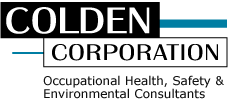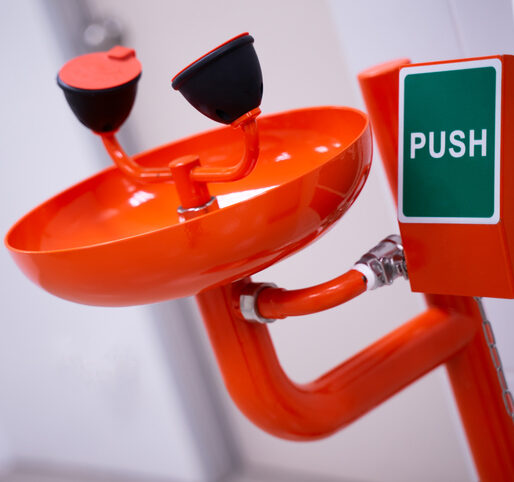In 2020, exposure to harmful substances or environments accounted for 4,830 cases of eye-related injury or illness cases that resulted in at least one day away from work.
Research estimates that eighty to eighty five percent of our perception, learning, cognition and activities are mediated through vision, (Politzer, 2008). A team of neuroscientists from MIT has found that the human brain can process entire images that the eye sees in as little as 13 milliseconds — the first evidence of such rapid processing speed. (Trafton, 2014). An eye injury can have serious implications for employees including their ability to drive, watch a game, or effectively communicate.
Proper personal protective equipment (e.g., safety glasses, goggles and face shield) are an important tool to protect employee vision. When employees are exposed to a splash from injurious, corrosive materials, eye wash and emergency showers reduce the severity of injuries to the eyes and skin.
When employees have potential exposure to corrosive, injurious materials, OSHA’s Medical and First Aid standard, 29 CFR 1910.151(c) requires that “where the eyes or body of any person may be exposed to injurious corrosive materials, suitable facilities for quick drenching or flushing of the eyes and body shall be provided within the work area for immediate emergency use.”
OSHA Letters of Interpretation (LOI) from April 14, 2008, February 27, 2007 and May 5, 2004, clarify when and where eyewash stations are required in the workplace. Where employees have potential exposure to materials which are corrosive and injurious materials with high or low pH, or materials which can cause injury through corrosive action, strong irritants and toxic substances, employers must provide facilities for flushing of the eyes. If there is a potential for a splash to more than the eyes and face, the requirement includes an emergency shower. OSHA has clarified there is no threshold quantity that requires an eyewash or shower unit. The employer must determine if there is a possible exposure of an employee to injury from contact with a corrosive material. If the answer to that question is yes, the standard applies.
OSHA has referred to American National Standards Institute for Emergency Eyewash and Shower Equipment, ANSI/ISEA Z358.1 as a guide for determining what “suitable facilities” means. According to the industry consensus standard, an eyewash must deliver 1.5 liters per minute for 15 minutes. A portable eyewash unit must have 28.5 liters (6 gallons) of reserve capacity. A personal wash bottle can be used as a supplemental method to reach an eyewash but does not take the place of a plumbed or self-contained eyewash. A portable shower must have 300 gallons of reserve capacity and must be near the hazard.
State programs may have specific requirements. For example, Michigan OSHA has issued an Instruction which clarifies that an eyewash is required when materials that have the GHS hazard statement “causes serious eye damage,” or skin corrosion (i.e. Category 1), or “causes serious eye irritation” (i.e. Category 2A) are used.
The consensus standard defines near proximity as 10 seconds of travel distance or 55 feet. Remember OSHA does not “approve” or “certify” products or equipment. The employer must determine whether emergency eyewash and shower equipment meet their needs. ANSI/ISEA Z358.1 can help determine if they meet the requirements of the standard.
Substance specific standards (e.g., formaldehyde, methylene chloride) often have requirements for eyewash and shower equipment. Other standards (e.g., dipping and coating operations, bloodborne pathogens, pulp, paper, and paperboard mills) have specific requirements for eyewash and shower facilities for those operations and industries.
Eyewash and showers do not prevent exposure to injurious and corrosive materials. They reduce the severity of the injury. The best strategy is to use the hierarchy of controls to evaluate specific controls that can be used to minimize or eliminate the risks associated with injurious, corrosive materials. Connect with a Colden consultant for help evaluating and mitigating the risk of working with corrosive materials at Colden Corporation.
Colden Corporation consultants can help you with all aspects of your occupational health and safety programs. Learn more about Colden’s service offerings and connect with a consultant by submitting an inquiry.
References
Trafton, A. (2014). In the blink of an eye. MIT News. https://news.mit.edu/2014/in-the-blink-of-an-eye-0116
Politzer, T. (2008). Vision Is Our Dominant Sense. Brainline. https://www.brainline.org/article/vision-our-dominant-sense#:~:text=Research%20estimates%20that%20eighty%20to%20eighty-five%20percent%20of,arrive%20at%20an%20appropriate%20motor%2C%20and%2For%20cognitive%20response.


